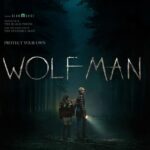
The Adam Project
2050: the pilot of a fighter capable of traveling through time is chased and injured, so much so that he attempts an emergency time jump. He ends up in 2022 – and not in 2018 which was instead his destination – where he meets his still child self. The latter soon understands that he is faced with his own adult version, who does not mind giving explanations because his intent is in any case to change the past to avert an apocalyptic future. At the crossroads of the timeline he wants to alter is his father, who died about a year earlier in an accident.
The Adam Project is a children’s film about grieving and the importance of staying true to your values, all framed by a sci-fi adventure and with a bittersweet ending.
At first sight the children’s cinema of the eighties comes to mind and it is no coincidence that the director is Shawn Levy, who with the Stranger Things series has already amply demonstrated his love for Amblin’s films. Here he reunites with Ryan Reynolds, with whom he had just made the successful Free Guy – Hero for fun, while among the screenwriters there is surprisingly Jonathan Tropper, who is known on TV for some of the most violent action series of ‘ America like Banshee, Warrior and See.
Here instead the script almost slavishly applies the formula of many Pixar films, where the very rhythmic and comedy-mixed adventure is often associated with the elaboration of a parental mourning, which does not meet a banal happy ending but instead finds a melancholic reunion and, at least in intentions, even moving – as for example in Onward.
However, live action cinema lacks the stylistic synthesis of animation, which can elevate situations that are perhaps even cloying through visually and conceptually daring choices such as those of Inside Out and Soul, which even look to abstract painting. Instead, The Adam Project sits on a brightly colored, sharp CG aesthetic already sported in Free Guy and common to, say, Marvel Studios films. A sort of lowest common denominator of the tastes of the mainstream public which is probably good for all occasions, but which is also obvious and banal.
Furthermore, the PG-13 cut of the film obliges to tone down every scene of violence, with counterproductive effects already present also in Free Guy. Both of Shawn Levy’s titles purport to be liberal and anti-violence, but end up glorifying the use and abuse of firearms and even the idea that it makes sense to prepare for the worst with a personal supply of automatic weapons and explosives.








